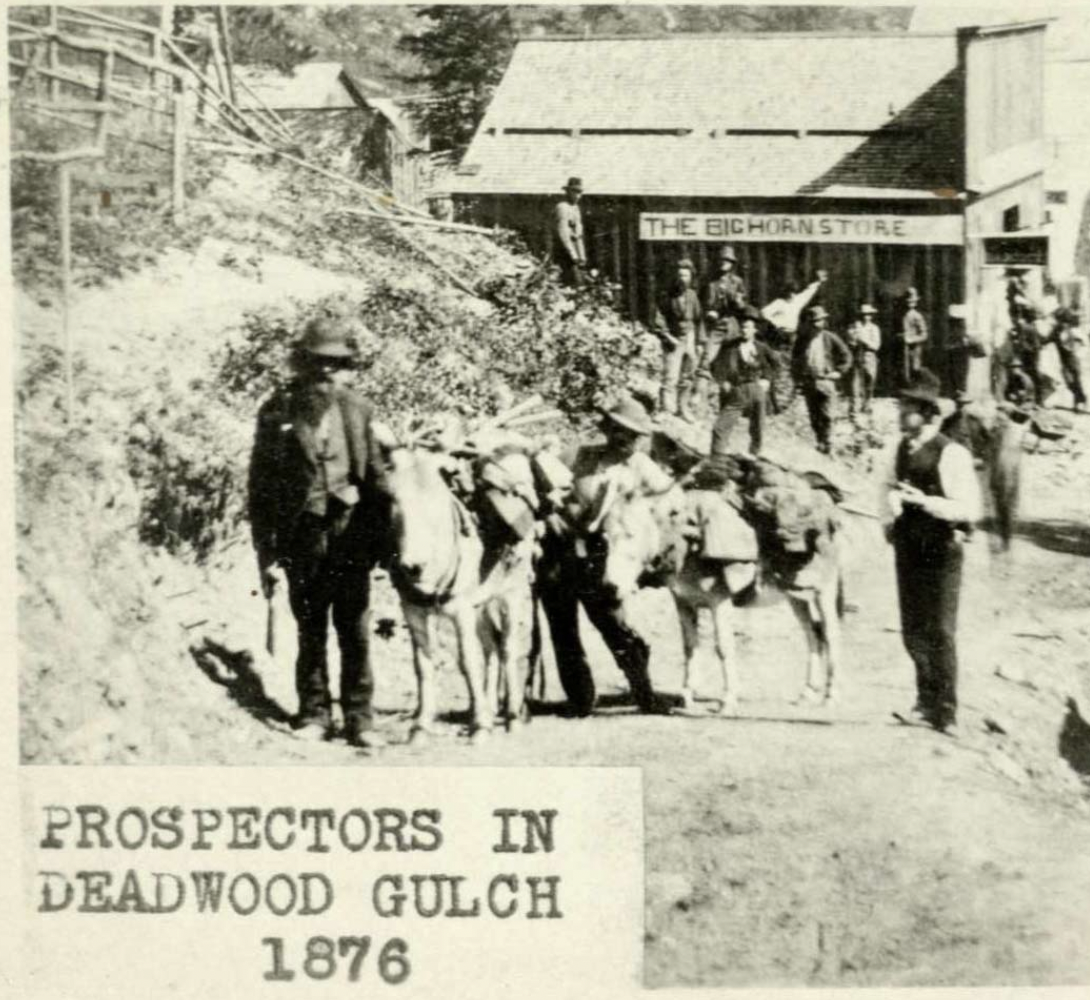In Deadwood, where the echoes of laborers and prospectors from the Gold Rush era still resonate, Labor Day takes on a special significance. Celebrated on the first Monday of September, it honors this historic town’s hardworking American spirit, which still thrives.
As we all pay tribute to the labor force, the day becomes a moment of reflection on the contributions of those who toiled during the town’s formative years. With a nod to the labor movement’s historical impact, we recognize the importance of improved working conditions and acknowledge the enduring legacy of those who shaped its foundations.
We’re collaborating with Deadwood History, Inc. to celebrate our rich history by featuring a Prospector of the Month. This month we feature prospectors on Main Street in Deadwood, South Dakota, in 1876 – the year it all began. (We feel it’s only right to acknowledge the hardworking donkeys who helped these prospectors stake their claims.)
According to the Adams Museum, the photo is half of an unused postcard featuring a photograph. Their description says, “The photo shows two men with heavily loaded burros (donkeys) on lower Main Street of Deadwood. They are traveling away from The Big Horn Store. A man in a white shirt, vest, and hat is standing close by, and at least 8 men are in the background close to the store, looking toward the camera.”
According to Deadwood History, the Big Horn Store was first owned and operated by P.A. Gushurst and William Connors. They believe it was named after the Battle of the Little Bighorn, where George Armstrong Custer was killed and his army defeated by the Lakota and other Plains Indians in June 1876. While sometimes referred to as “Custer’s Last Stand”, the battle is known to Native Americans as the Battle of the Greasy Grass and was a pivotal battle in the Great Sioux War of 1876.
Back in Deadwood, eventually, Jacob Goldberg bought the Big Horn Store and renamed it Goldberg’s Grocery. In the photo, Dr. L.F. Babcock’s sign can be seen hanging from the corner of the building. According to Deadwood History, Babcock arrived in Deadwood in August 1876.
The postcard/photo also refers to the location as “Deadwood Gulch,” an early name for the mining site that would become Deadwood. In 1876, prospectors in the Black Hills found a gulch full of downed, dead trees. More importantly, they also found gold.
Before long, “Deadwood Gulch” was a bustling mining camp, attracting prospectors from all over the country. Soon it was a full-fledged town, and quickly became the place where legends came to live – Wild Bill Hickock, Seth Bullock, Calamity Jane, Potato Creek Johnny, and Nat Love.
Did you know that First Gold Gaming is aptly named due to the proximity of where gold was initially struck in Deadwood? Featuring miners who formed this region is a symbiotic and fun way to tie into the local culture. After all, we all hope for the same thing – striking it rich.
Want to see for yourself? Call us at 800-274-1876 or visit our website to book a room and strike your own First Gold.
Photo credit: Prospectors on Main Street in Deadwood, South Dakota, 1876. Deadwood History, Inc., Adams Museum Collection.

